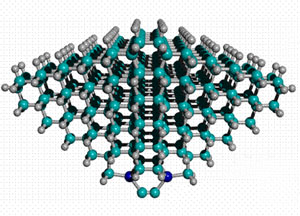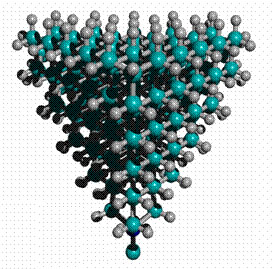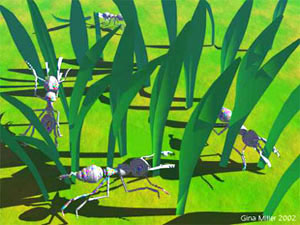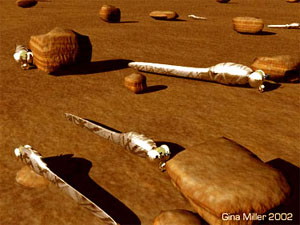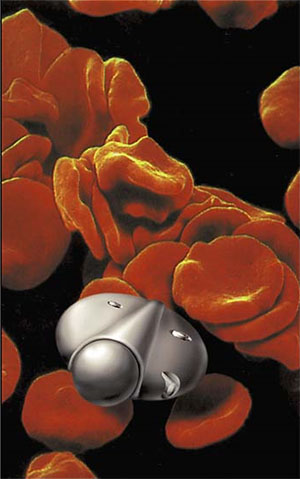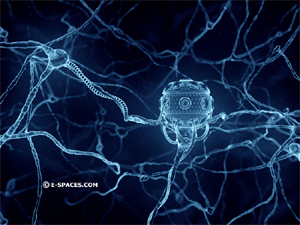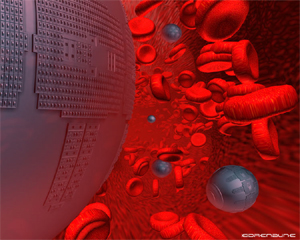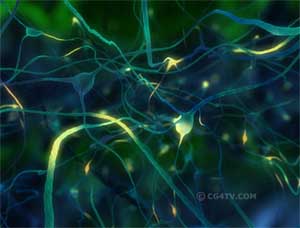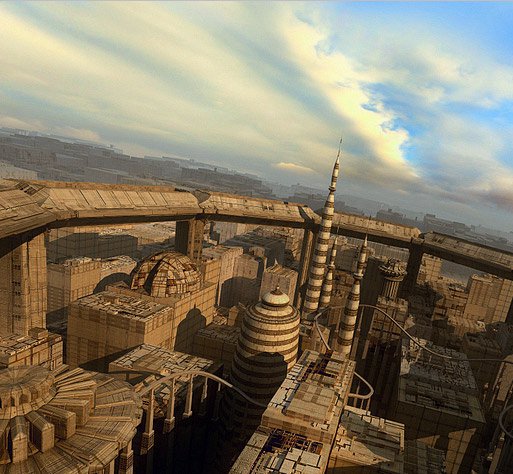| THE EXTROPIC ART MANIFESTO
We are transhumanists. Our art integrates the most eminent progression of creativity and sensibility merged by discovery. I am the architect of my existence. My art reflects my vision and represents my values. It conveys the very essence of my being—coalescing imagination and insight, challenging all limits. We are exploring how current and future technologies affect our senses, our cognition and our lives. Our attention to these relationships become fields of art as we participate in the most immediate and vital issues for transhumanity—extending life, augmenting intelligence and creativity, exploring the universe. Artists, as communicators, bring together the passions, the dreams and the hopes of transhumanity and express these emotions in ways that touch us deeply. Extropic Arts reflects an appreciation of aesthetics in a technologically enhanced world. We are voices of transhumanity. Our voices are a synthesis, rhythm and exploration of imagination. The Extropic Art Movement regards art as more than an artifact. Art influences social and cultural change: how we live and who we are. It creates a sense of self, art as being, autonomous yet connected to culture¡¯s continuum. How we accomplish our intentions is a matter of selective individual choice— whether abstract or representational, whether artifact or conceptual. Our criteria for art remain open and we welcome cross-disciplinary innovations. As we move into the 21st Century, Extropic Art will suffuse the universe around us. Our unique ingenuity will spread far out into the capillaries of our culture. We are active participants in our own evolution from human to posthuman. We are shaping the image—the design and the essence—of what we are becoming.
Natasha Vita-More
TRANSHUMANIST ARTS STATEMENT
Transhumanist Arts represent the aesthetic and creative culture of transhumanity. Transhumanist Artists are developing new and varied modes of art. Our aesthetics and expressions are merging with science and technology in designing increased sensory experiences. Transhumanist Artists want to extend life and overcome death. We plan to do so with vitality and amplified creativity. Emotions are integral to sensing and understanding life. We exercise a transhumanist ecology of self-awareness and self-responsibility. If our art represents who we are, then let us choose to be transhumanist not only in our bodies, but also in our values. The Transhumanist Arts embrace the creative innovations of transhumanity. We are ardent activists in pursuing infinite transformation, overcoming death and exploring the universe. As Transhumanist Art comes into focus, as the tools and ideas of our art continue to evolve, so too shall we.
Natasha Vita-More
Art History:
Transhumanist Arts was introduced as an "art theory" in 1982. The "Transhumanist Arts Statement" establishes a poetic doctrine of transhumanist expression. By 1990 Transhumanist Arts had become an arts period reflecting the timeframe of transhumanity—the global transhumanist culture. By the late 1990s, Transhumanist Arts was recognized as an art period and an organization for artistic and innovative thinkers worldwide. Transhumanist Arts focuses on a positive, meta-creative and enlightened view of human potential, aesthetic design in technology, the prevalence of science, and aestheticism in the future architecture of life. With the exhilaration of super fast computers, AI, SI, biotechnological breakthroughs, nanotechnology, and prospects of superlongevity, the Singularity, the very contour of art is undergoing a facelift—an emendation. These scientific and technological meta-changes affect the visions of artists. The latest watershed advances occurring in the world around us directly affect the aesthetics of our visions. Our senses are alert, excited, moved, and impassioned by the pulsating rhythm of culture. Artists and the arts, throughout history, have been a voice and a vision of civilization. Artists, as communicators, reach out to others and introduce insight and vision about society and culture. Artists and the arts bring together the passions, the dreams and the hopes of humanity and transhumanity and express these emotions in ways that touch us deeply Whether it is high-end electronic or robotic, multi-media pieces, or filmmaking, poetry, fiction, science fiction, video, paintings, music, dance, sculpture, architecture, literature—our work communicates to culture and affects the pulse of culture What marks the beginning of Transhumanist Arts? The independent film "Breaking Away" (1980) marks the beginning of Transhumanist Arts. The central theme of the short depicts the human quest in overcoming dogma and evolutionary limitations. Transhumanist Arts was founded in 1982 by Natasha Vita-More (f/k/a/ Nancie Clark) and introduced as an "art theory" (originally, "TransArt"). The "Transhumanist Arts Statement" written to established a poetic doctrine of transhumanist expression: "Transhumanist Arts represent the aesthetic and creative culture of transhumanity…Our aesthetics and expressions are merging with science and technology in designing increased sensory experience…Transhumanist Artists want to extend life and overcome death…If our art represents who we are, then let us chose to be transhumanist not only in our bodies, but also in our values…As Transhumanist Arts comes into focus, as the tools and ideas of our art continue to evolve, so too shall we." At the onset of the transhumanist movement, transhumanists referred to themselves "transhumans". It was not until the late 1980s that the phrase "transhumanist" took hold. Around this time, Transhumanist Arts theory had evolved into an arts organization. Today Transhumanist Arts is both an organization and an art period, reflecting the creative innovations and artistic expressions of transhumanity. As an art theory, Transhumanist Arts coalesces the arts, sciences and technologies by recognizing the exponentially growing rate of change in our society. These rapid changes include mass computing power, superintelligence, nanotechnology, biotechnology, genetic engineering, superlongevity, fast-track communications, the Internet and its offspring, space exploration, human augmentation for improving and extending life, and the Singularity. The technological advances directly affect culture and thus the arts in countless ways.
By 1990, Transhumanist Arts had become an organization. Today Transhumanist Arts is both an organization and an art period, reflecting creative ideas and artistic projects developed during the period of transhumanity. On January 1, 1997, a genre of Transhumanist Arts, Extropics, launched a Manifesto on the Internet, and the movement was champagne toasted in good cheer in Los Angeles. In the ensuing months, hundreds of creative thinkers signed the Manifesto, and others began calling themselves transhumanist extropic artists. In October of 1997, the Manifesto was sent into space on board the Cassini Huygens spacecraft. It is the first writings of transhumanity to leave the earth and travel through the Asteroid Belt to Saturn. By this, the meme "We are transhumans . . ." has spread far beyond Earth, out into the Solar System. As an outgrowth of Transhumanist Arts, the Extropics genre represents an aesthetic culture of transhumanity—ideas about super intelligence, superlongevity, biological-technological interface, intelligence and creativity augmentation, space exploration, the Singularity (or Spike). Extropic Art is not limited by conventional art forms or modes of the arts. It can indeed be an artifact such as an image, a musical score, a film, or story, or it can be many creative modes of expression, such as innovative ideas and activities. Other genres of Transhumanist Arts are "Automorph"—the art of consciously and comprehensively sculpting one’s psychology and physiology "Art as Being". "Exoterra" is the fusion of art and the universe. Automorphing has become an active expression for many transhumans because of rapid interest in how the body might look in the coming decades as well as interest in our continued interface with computers. Most of us want to live indefinitely and in doing so we can now actively set into practice reinventing ourselves and redesigning how we want to look. Automorphing is self-sculpting. Exoterra, on the other hand, can be works produced by space architects or space educational designers, composers who bring to mind the musical wondrous elements of space, science fiction, space paintings, poems and electronic imaging are all mediums that lend themselves to Exoterra Art. "On several occasions, I have been asked how Transhumanist Extropic Art differs from or opposes preceding genres such as Expressionism, Dadaist, Actionism and Conceptual Art. Extropic Art doesn't intentionally differ from any previous genre or movement, it has evolved out of them." Italian Futurism rejected tradition and worshipped the machine, Dadaist used shock tactics and feared optimism, Fluxus focused on the state of mind of the artist rather than the objet d’art, Conceptualists had great thought and little product, and so on. Yet, these genres have influenced Extropic Art and the Transhumanist Arts period. Futurism allowed the artist to participate in the Industrial Revolution with new tools, Dadaists questioned the "museum dogma," Fluxus generated thinking, Conceptualists went a step further. These genres, from abstract expressionism and Modern Art through Performance Art, have influenced Transhumanist Arts. The difference between some previous genres is found in the tools we use and the reason why we are producing art—what occurs in our minds. For the first time in history, transhumans as artists want to live indefinitely, want to live in space, want to augment our intelligence, want to grow more desirable, brighter, more creative. Art genres or movements either react to the preceding ideas or they mesh ideas from the past with new vision and new tools. Surely, an extended lifespan is not a new concept, but how transhumans view extending the human lifespan is. In the past, immortality was a wish either gained by some religious promise, pseudoscience or by mystical means. Transhumanists understand that we have biological limitations and that by intelligent planning we will be able to extend our lives. A similar parallel can be drawn with the idea that "my life is my art"—a theme used in several genres. However, transhumanists see our lives as a work in progress as we evolve. The tools of our trade are changing so rapidly, as I have stated already in the section on Transhuman History; we must keep up with these changes. We do not have to be driven into a mad frenzy with relentless changes and expense of such changes, but we must at least have an understanding of where it is going. It is perfectly clear that the new tools are heading in the direction of refining and designing and prolonging life. Extreme life extension is on the drawing board."
Today there are an increasing number of artists who are beginning produce art in a transhumanist mode. As humanity steadily advances to the next evolutionary stage, more and more artists will make the shift towards transhumanity. Transhumanist Arts Trends: From 20th Century Art to 21st Century Art — Transhumanist Arts of the 21st Century did not appear out of the blue. Much of its content has evolved from art movements and art forms of artists who preceded it. The historical continuity of this art can be illustrated through the early 20th century and even farther back in time though ancient myths and perceptive visionaries. Today, the Transhumanist Arts culture is still forming. The beginnings of artists engaging in either science or technology and individualism was evidenced in Futurism (Italy 1908) and Dadaism (France 1915). Futurism rejected traditions while glorifying contemporary life by emphasizing two dominant themes, the machine and motion and advocated the fusion of art and science. Dadaism was more a world-view rather than a style. The Dadaist manifestos were often aimed at startling the public into reconsidering accepted aesthetic values. This type of rethinking—employment of technology, science, individualism and the revoking of traditional standards—is transhumanist in scope. Although Dadaists tended to be irrational and negative and Futurism was short-lived, Transhumanist artists are rational and dynamic optimists and intend to live indefinitely. Abstract Expressionism (1940-1950s) kicked-off the Contemporary Art Movement with predominant concern of self-expression. While the trends were approaching a cybernetic concepts in art with lasers, holography, and neon art, Conceptual Art (1960s-1970s) had enormous influence on artists merely by reflected the artistic mind. The act of thinking became the art form. By offering models for problem solving and engagement in non-art systems (meaning not producing an object of art such as a painting or sculpture or poem); interests in science and technology was at a peak. Soon after, Performance Art (1970s to present) presented an extraordinary open-ended art form where artists’ desire to communicate more directly with viewers than through an "object". Simultaneously, High-Tech Art (a contemporary art) (1970s) utilized diverse technologies with the sentiment that the more effective the High-Tech Art, the more it transcends its hardware. However, most tech art remains an exploration in technological art rather than a world-view. It is a part of the Art & Technology movement, but its more recent art expresses ambivalence of postmodernism towards technology. It is important to keep in mind that not all tech art is transhumanist in scope. The use of high-end technology or great aesthetic value in subtranshuman concept or storyline does not equal transhumanist magnitude. Elaborate special effects fall short of content when the use of great technology is used to repeat antiquated myths.
|
||
|
Defining Transhumanism
The Italian verb “transumanare” or “transumanar” was used for the first time by Dante Alighieri (1265-1321) in the Divine Comedy. It means “go outside the human condition and perception” and in English could be “to Transhumanate” or “to Transhumanize”. T.S. Eliot wrote about the risks of the human journey in becoming illuminated as a “process by which the human is Transhumanised” in his play “The Cocktail Party” (The Complete Poems and Plays 1909 - 1950, published by Harcourt, Brace & World, Inc., New York). The actual concept of transhuman as an evolutionary transition was first expressed by FM-2030. His trilogy, Up-Wingers, Telespheres and Optimism One (1973) constitutes the beginnings of the transhumanist philosophy, as well as his contributing final chapter in Woman, Year 2000 (1972) Ideas about humanity and evolution were explored by Julian Huxley in his writings on evolutionary humanism in the book Evolution: The Modern Synthesis (1942) and Teilhard de Chardin in The Future of Man (1959). In 1966, FM-2030 (formerly, F.M. Esfandiary) outlined an evolutionary transhuman future while teaching “New Concepts of the Human” at the New School for Social Research, New York City. Abraham Maslow referred to transhumans in Toward a Psychology of Being, (1968), Robert Ettinger also referred to transhumans in Man into Superman (1972), I authored the Transhuman Arts Statement (TransArt) (1982) and outlined the emerging transhuman culture, and by Damien Broderick in The Judas Mandala (1982).
In the Reader’s Digest Great Encyclopedia Dictionary (1966), “transhuman” is defined as meaning “surpassing; transcending; beyond”. In the Webster’s New Universal Unabridged Dictionary (1983), “transhuman” is defined as meaning “superhuman,” and “transhumanize,” meaning “to elevate or transform to something beyond what is human”. Yet, these are not a complete and contemporary meanings. Today, we refer to “transhuman” as meaning an evolutionary transition from being biologically human toward our merger with technology. FM later defined transhuman as “a new kind of being crystallizing from the monumental breakthroughs of the late twentieth century. ... the earliest manifestations of a new evolutionary being.” Later, he authored the book Are You A Transhuman? (1989). Transhumanism has a slightly different beginning. Julian Huxley’s book written in 1956, New Bottles For New Wine, contains the essay “TRANSHUMANISM” which sets out to explain how humans must establish a better environment for themselves. He also alludes to a new species that the human might eventually become. The difference in Huxley’s transhumanism and Max More’s transhumanism is that Huxley states “man remaining man but transcending himself.” Transhumanism as defined by Max More explains the overcoming of human limits and the transformation from being human to becoming posthuman. Although Huxley had a vision of a possible future for humanity, he single-tracked the future when he saw man remaining man. How did the memetic spreading of transhumanity begin? What started as futurist ideas taught by FM at the New School eventually became evolving ideas held by thousands of individuals linking across the Internet. Transhumanist Arts developed out of TransArt. The cyberculture became the most fertile breeding ground for people interested in exploring new tools. Extropy Institute spearheaded extropian transhuman influence academically, in print and throughout the Internet. The Extro Conferences, meetings, parties, on-line debates, and documentaries have continued to get the idea of the transhuman to the public. While the scientific community embraced the new concepts in human evolution, the art community focused on exploring new tool of electronics to enhance our senses and develop alternative realities. Soon evolutionary memes such as extropy, nanotechnology, biotech, A-Life, AI, SI, VR, transhuman, automorph, extreme-life, avatar, singularity, and thoughts of new types of sexuality and genders arose. Like meme spores infiltrating culture with words well known in the scientific world, artists have been exploring the ideas of evolution and giving them the art of life.-
Culture of Transhumanism The transhumanist culture is in the making. We have responsibilities and concerns and the wisdom to deal with them. How we use technology and science, and what type of content we lend to our arts is not a flimsy affair. We must be conscientious and sensible, as well as daring and inventive. We must consider who we are in a world where the machine is becoming smarter and smarter, where the impossible is now quite possible, and think of it also as an extended haiku Transhumanism marks the beginning of our evolution from human as we improve the human condition. Put simply, humans are biological animals. The transhuman is at a transitional stage of merging with technologies resulting in a shedding a biological exclusivity. It is a self-directed evolution brought about by the desire to live longer, healthier and more intelligently. The transhuman is a self-directed evolution—evolution that has bypassed Darwin and the selfish gene toward the designing and engineering of our own future, enabling us more control of our own lives. The coalescing of science, technology and creativity will challenge what was once the accepted idea of life and death. Transhumanist ideas originated in diverse cultures. We can find traces of transhumanist thought in our earliest inventions and discoveries. From marking the surface of prehistoric cave walls over 17,000 years ago to transmitting signals across the light years of space, ingenuity has illustrated humans’ use of technology. Our desire for extending life and immortality, mirroring our own image in omnipotent reflections, pushing beyond our limitations—has catapulted our species toward an accelerated evolution from human to transhuman.
The transhumanist history is comprised of events that have transformed our species. These events are the result of innovations generated through transhumanist creativity. In every aspect of our being—each inch—each thought—creativity is in action. It is the fire behind our passions. It is the fuel igniting our will. No matter how diminutive or how colossal an idea, it is in the creative impulse that has accelerated our evolution. Evolution happens on many fronts. It is not just our biology that mutates and evolves, it is also our psychology that undergoes transformation. For the first time in history transhumans are actively researching and developing the skills to end death. It is not an immoralist's pipe dream—nor a mirage, but an objective to be attained, and perhaps in our lifetime. Those of us who actively call ourselves transhumanist do so with a commitment to extending and improving life. The commitment to extending life is a litmus test for transhumanity. If we do not overcome death, we have no future. Our evolution has been a cumulative process. Footprints across time have left traces of our reach beyond ourselves for something better. From the earliest plebeian cultures to the advanced complexities of social systems the future has been unfolding. Today we are on the threshold of the present evolution—the transhuman. Create!
| ||
